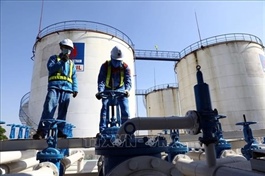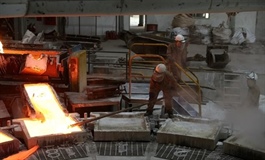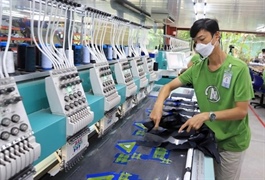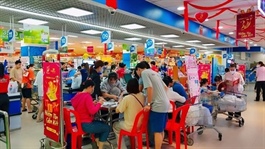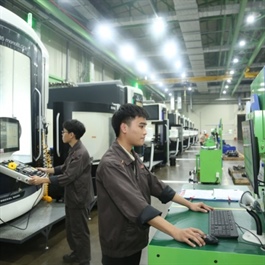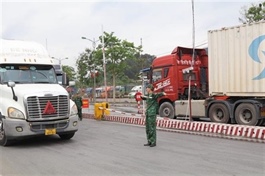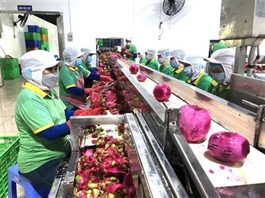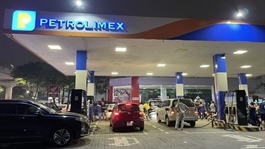Textile and garment businesses face difficulties due to lack of domestic supply
Textile and garment businesses face difficulties due to lack of domestic supply
The textile and garment industry has long faced an imbalance between production stages.
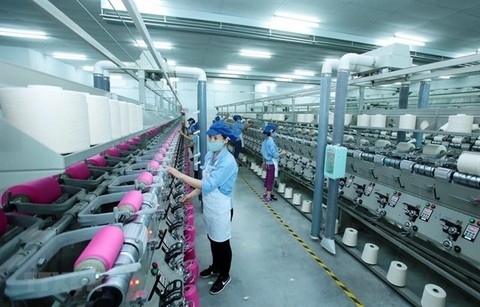
Production line of Jasan Textile and Dyeing Việt Nam. — VNA/VNS Photo |
The two stages at the beginning and end of the chain, yarn and sewing, have a very large scale of development, while weaving and dyeing have remained industry bottlenecks for years.
Infrastructure for weaving, dyeing and fabric production is still limited, and there is no spatial planning for development and centralised wastewater treatment, said Nguyễn Thị Tuyết Mai, Deputy General Secretary of the Việt Nam Textile and Apparel Association (Vitas).
Some localities refuse textile and dyeing projects, saying that the textile and dyeing industry causes pollution, although investors say they will use modern processing technology that will not have a negative impact on the environment.
Meanwhile, to enjoy preferential tariffs from new generation free trade agreements (FTAs), businesses must meet the rules of origin “from the yarn on” or “from the fabric onwards”.
“To solve the problem of limited raw material supply, we need to take advantage of the benefits of the Comprehensive and Progressive Agreement for Trans-Pacific Partnership (CPTPP) to attract foreign investment in the raw material supply chain,” Mai told the Kinh Doanh (Business) online magazine.
Experts believe that if the bottleneck in the dyeing process could be resolved, it would help raise Việt Nam's position in the global textile and garment supply chain, enabling it to take full advantage of FTA tariff preferences.
Not only with the issue of textile dyeing, the shift of investment into the supply shortage of the Vietnamese textile and garment industry is still not as expected.
Domestic enterprises in the textile and garment industry still lack connection and fail to fully complete the supply chain within the country. As a result, the supply of raw materials is heavily reliant on imports at various stages of the production process.
Up to 90 per cent of textile and garment raw materials of enterprises in HCM City were dependent on imports (mainly from China), while only 10 per cent was local supply, said Phạm Xuân Hồng, Chairman of the HCM City Textile and Garment - Embroidery Association (Agtek).
In general, shifting investment into the textile and garment raw materials sector required more effort from domestic enterprises, rather than relying solely on foreign direct investment (FDI), said Hồng.
To reach the goal the Government has approved in the "Strategy for developing Vietnamese Textile, Garment and Footwear Industry by 2030, with a vision by 2035", one decisive solution needed is to increase investment in the industry's supply shortage.
We must consider investing in the supply shortage in the textile and garment industry as an urgent need, noted Hồng.
This requires policy support promotion and capital sources for domestic enterprises to invest in textile and garment supporting industries.
Furthermore, in areas and localities with a high density of textile and garment enterprises, it is also recommended to build a number of large industrial parks in the field of textile and garment supporting industries with new technology to ensure environmental standards for "greening" the textile industry.




